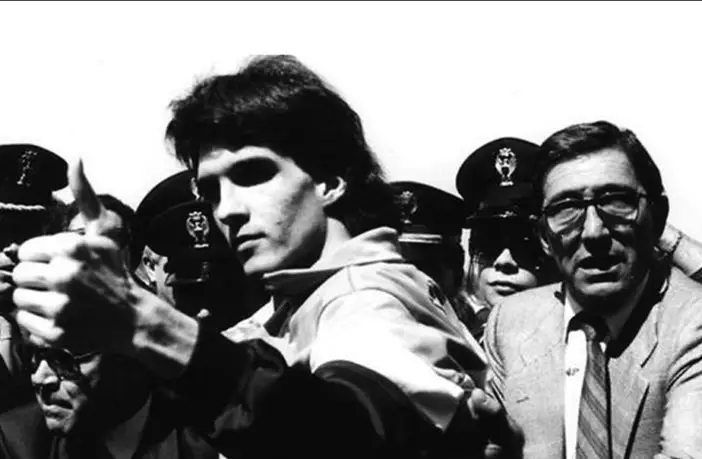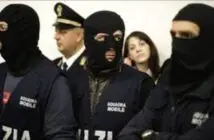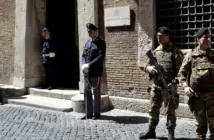Carlo Celadon was at home in the small Italian town of Arzignano, having dinner alone. The 19-year-old’s father, Candido Celadon, a wealthy entrepreneur, was on holiday with his sister, and Carlo’s older brother was away on his honeymoon. Suddenly, four armed men broke into the house. They tied Carlo up, locked him in the trunk of a car and drove away. That night, on the 25th of January, 1988, Carlo became the victim of the longest kidnapping in Italian history; 831 days.
A Lucrative kidnapping business
The four men were members of the ‘Ndrangheta, a powerful mafia organization from the region of Calabria. Today, the group is a key player in global drug trafficking, generating an annual turnover of an estimated €44 billion. Before their ascent to criminal superpower status, though, the ‘Ndrangheta built their fortune by kidnapping members of rich families and demanding ransoms. During the so-called “season of kidnappings”, from the late-1960s to the early-90s, almost 700 people were taken hostage.
Italian journalist Pablo Trincia reconstructed Carlo’s story of “human suffering and resistance” in an episode of the Italian podcast Buio, or Dark. “This period marks a turning point in the rise of mafia clans,” Trincia says. “The ‘Ndrangheta built a real system centered around the kidnappings, which involved reinvesting the earnings in more profitable illegal activities, like property investment and drug trafficking.”
Back on that January evening in 1988, Carlo’s kidnappers drove 17 hours non-stop to Aspromonte in Calabria, where the ‘Ndrangheta is based. There, he was chained up and left in a small hole dug in the ground, with only a bag of bread to eat. Carlo knew from news reports that abductions could often last up to six months since negotiations and organizing ransom money took time. “I was expecting a long period of suffering,” he recalled on the podcast.
Life in a Hole
Trapped in that hole, there was one memory Carlo couldn’t shake. One night, he’d been eating dinner with his dad while watching a news segment of another hostage being freed for ransom. He asked his father what he would do in that situation. Candido looked him in the eye and shook his head, implying he would never pay the money. “I feared he would leave me to die,” Carlo said.
In reality, his father raced home from his holiday, ready to do anything to save his son. For days, the family just got fake calls from scammers pretending they had Carlo. The Celadons waited anxiously for three months for the real kidnappers to get in touch. Then, a man going by the name “Agip” demanded 5 billion lira for his release, the equivalent of €2.6 million, or $2.9 million, today.
But Carlo didn’t know any of this. During the months of silence, the kidnappers had been feeding his darkest fears, telling him his dad was refusing to pay. They asked him to write letters to his father imploring him to help, letters which were never delivered. When Candido demanded proof that his son was alive before starting negotiations, they gave him a tape in which Carlo accused him of abandoning him and only thinking about his money.
After the first call, local public prosecutor Tonino De Silvestri took the lead on the case. “There were two schools of thought,” De Silvestri explained on the podcast. “Some believed the family’s assets should be frozen [to pressure the criminals into dropping the ransom request], and all contact avoided. Others suggested leaving it to the family.” De Silvestri chose a compromise, initially freezing the family’s assets but letting Candido deal with the abductors. The idea was that the police would bust them on the day of the exchange.
Almost Rescued
Months went by and Carlo remained chained in the hole. “The smell of my food attracted mice, so I stayed in a corner,” he told Trincia. “I’d put a piece of cheese under a glass, and when mice came in I’d squeeze their heads off. Snakes crawled in twice … I knew if they bit me and it got infected, my kidnappers would never take me to hospital.” Another time, Carlo almost drowned during a storm after his hole filled with water. “I cried – I screamed at the top of my voice – but no one answered.”
Eventually, Candido and Agip agreed to meet. Candido followed the instructions and dropped off the money, but Carlo wasn’t delivered as promised. The police, stationed nearby, followed the men who picked up the ransom to a small house and arrested five people. But Carlo and the money were already gone.
Shortly before the raid, the gang had moved Carlo to a cave in the middle of the woods. For the following seven months, all communication stopped. Carlo’s family feared him dead. Eventually, Agip reached out to them again, demanding another 5 billion lira. Agip’s tone became increasingly aggressive. “Just tell me if you don’t want to pay,” Agip told Candido. “We’ll deliver his head to you.”

March 1990, trial for the kidnapping of Carlo Celadon (still a prisoner in Aspromonte). The group of defendants: from left Francesco Sagoleo, Leonardo Marte, Emanuele Calfapietra.
Freedom after 831 days
Months later, another meeting was arranged. Candido had negotiated the second ransom down to 2 billion lira (€1 million). On the morning of the 4th of May, 1990, 831 days after his abduction, Carlo was finally set free.
“They took me to a freeway and left me lying on the ground,” he recalled. A driver spotted him and called the police. By this point, Carlo had lost 30 kilos (about 66lbs) and could no longer stand up. He refused to talk to his dad on the phone, still convinced that he’d been held captive for so long because his father wouldn’t pay up.
“What really struck me about Carlo Celadon’s story,” Trincia explained, “was how he avoided going crazy. He survived for two-and-a-half years in a hole, with nothing to do except count the seconds between dawn and sunset, with the constant thought that his family had abandoned him and that he might be killed any day.”
According to the Italian Journal of Criminology, kidnappings were not only a source of income for the ‘Ndrangheta, but they also became a weapon to instill fear into the public and make the authorities seem powerless. The organized crime group created a loyal network of people around them by redistributing part of their earnings to poor villages in Aspromonte, which made it incredibly difficult to track down criminals.
Trincia said that a few years after Carlo’s release, the authorities managed to find and arrest Agip during a drug bust in Germany. “Listening to phone tapping’s, the police recognized his voice. But it was purely by chance, and it turned out he was only one of many intermediaries.”
The rest of the kidnappers disappeared into thin air, taking billions of lira with them.






